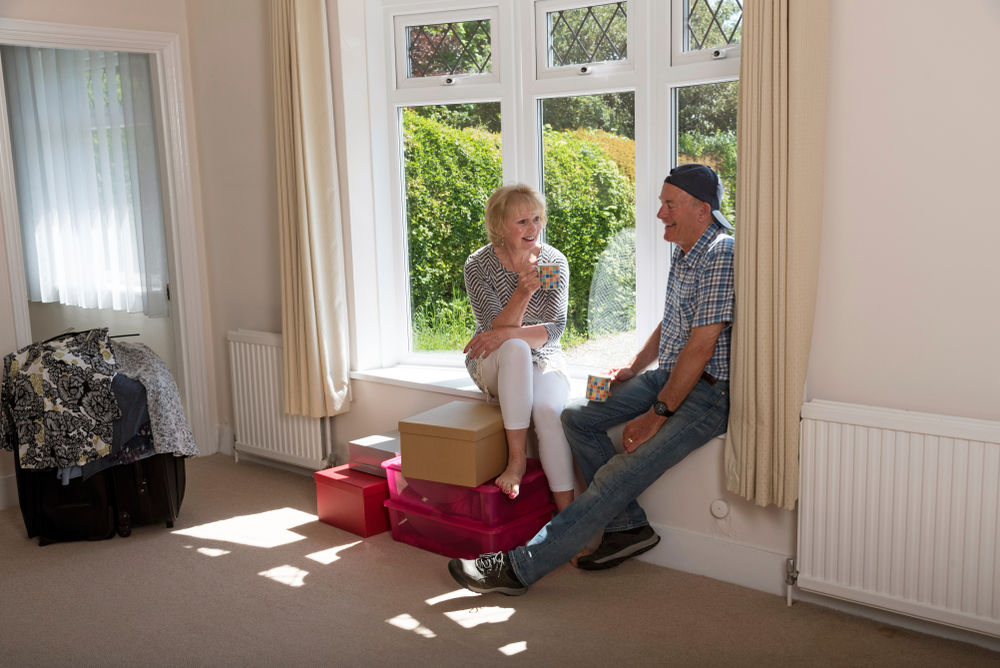
For a lot of older homeowners today, downsizing can be a great way not only to have a good clear out after your kids have left home, but also a fantastic way to create some equity. This financial boost will also most likely come with the added bonus of a reduction in running costs as you move to a smaller home. While there are plenty of benefits to downsizing, moving home can still be a complex and stressful experience, so we’ve put together a quick guide on what to consider to make the transition a much smoother process.
Decide what you REALLY need
The most important step to a successful downsize - and it’s one that you’ll want to take as early as possible - is taking a good look at all of your possessions and shedding as much as possible. This is the part where you have to consider your day to day life and think about how much you use all of these items. You should ask yourself, do you still need all of that seating in the living room, or do you need such a large dining table? If the answer is ‘no’ to questions like these, then it’s time to start dividing item into piles marked ‘keep’ or ‘give away’.
It’s not an easy process; letting go of a life’s worth of possessions, many of which will have sentimental value is tough to do, but the benefits on moving day will be worth it. For one thing, you won’t have as many things to move, and there will be less worry about how to fit all of your possessions into your new home as a result.
Don’t throw anything away
Once you’ve decided which items don’t belong in the ‘keep’ pile, it’s time to see if you can get some extra cash from your unwanted possessions. Most likely, there will be some items that may not be fit for use anymore and could be recycled, but those that are in good condition can be used to help purchase new items that are more suitable for your smaller home.
As we said earlier, separating your items early is the best strategy, as you will now have plenty of time to use websites such as Gumtree and eBay in order to facilitate selling the things that you don’t wish to keep. You might even be surprised by the how much interest they generate, and how much money they bring in.
Assess your new space
At this point, you should have divided your items and possibly sold a few, too. Even though you’ve probably gotten rid of a lot of possessions, it may still be a challenge fitting everything that remains into your smaller space.
If you’re already part of the way through the moving process and have agreed on which house you’re going to buy, start looking at measurements of each room and compare them against the furniture you currently have. For example, your king size bed may fit into your new bedroom, but will it leave room for much else? Start planning how everything is going to fit in and figure out how to get the absolute most out of each space. You may need to invest in smaller and more suitable items for your home such as a dining table that seats 4 instead of 8.
Prepare for moving day
Your last move was likely to a home of similar size if not bigger. However, this time you must consider that you’ll have less space to work with, meaning it won’t be just as simple as getting everything in and unpacking it later.
Whether you want to label all your boxes with ‘living room’ or ‘bedroom’ or use a colour coded system, it’s best to know what goes where before you begin to move things. As with any move, it’s wise to focus on the bigger items such as beds and chairs first, as this will give you a better idea of where to place all the small things.
Normally when a family moves into a bigger space, they initially use the extra room to store things that they’re too tired to unpack right away. If you’re downsizing then you probably won’t have room for a bunch of items to be out of sight and out of mind, so you should begin unpacking and organising all of your items as soon as you can. Moving into a smaller place and being surrounded by boxes for the first couple weeks will only ruin the experience for you by making it feel even smaller. Get organised early and get the full use out of your new home.